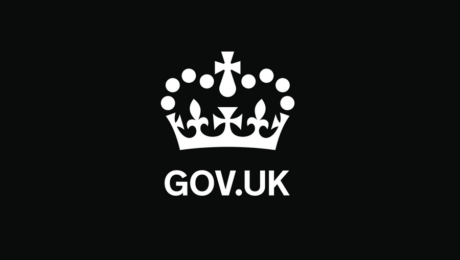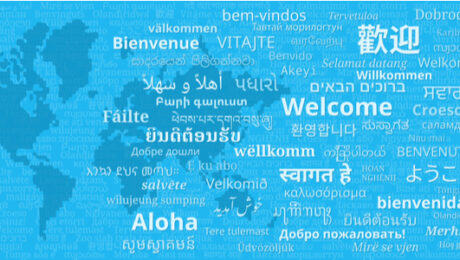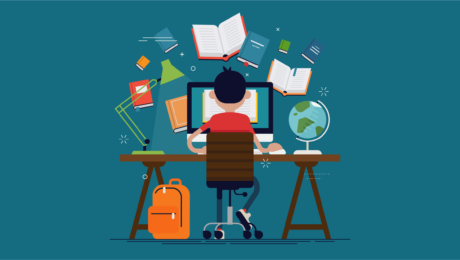Online Education Resources for Home Learning
The British Government have published online educational resources for schools and parents to help children to learn at home during the Coronavirus (COVID-19) outbreak…. read more here.
- Published in Articles, Uncategorized
Virtual Schooling: Sustainable Learning Solutions for the New Normal
It’s only been a week since my last blog and the BBC have reported that children in 10,000 homes in the UK will be provided with vouchers for internet, highlighting the disparity and inequality of technology access for learners.
Another article pointed to lack of engagement amongst students, due to a number of reasons including lack of technology and study space. Learners from poorer backgrounds were less engaged than those from wealthier backgrounds according to the referenced NFER study.
With reality setting in, these limitations and inequalities are becoming prominent, and with limited signs of any vaccine against the virus, the focus must shift to implementing sustainable solutions for the new normal. On a positive note, we are beginning to see education departments in governments starting to ask questions around sustainable and easy to implement solutions with more focus on the solution rather than the product.
What is becoming clearer by the day is that the world is not yet ready for a digital only solution, while the current situation cannot accommodate the old mode of classroom only learning. Therefore, an innovative integrated blended solution is critical for the new normal. Having spoken to education departments across a dozen countries, I am seeing trends for the following solutions or combination of solutions as a priority:
- Scalable, Flexible and Secure Learning System that;
- Engages the learner and is Easy to use for teacher
- Has been deployed and delivered outcomes at a national level
- Can be used in the classroom to ameliorate onsite teaching as well as for home learning
- Connectivity Solution: In partnership with telecom providers and NGOs, a unique model is developing to provide subsidised or free access to government approved learning apps. In return, the providers are able to use school grounds to put up secure satellite hubs and local WiFi hotspots, bringing benefits of internet access to the wider community.
- Digitalising Assessments: With paper handling being linked to virus transmission, governments are seeking solutions to digitalise exams and assessments, as well as deploy devices (personal and government owned) in the classroom. If implemented, this would amount to a significant overhaul of decades old testing system, as well as environmental and financial benefits of saving paper.
- Administration tools: In the Western world, a large part of school administration, identity management and reporting is already digital. This is now being sourced and implemented in the developing world, to help manage and monitor onsite and offsite learning outcomes and engagement.
Alongside this, various governments are beginning to look at content and curricula. However, given the complexity and political nature of this area, the focus for most civil servants has been to simply digitalise their existing resources and make it available through their learning and/or resource management systems.
I am encouraged by the speed and intensity with which governments are engaging, collaborating and communicating with each other and the wider education community.
The shift in focus from crisis management using free software solutions, to a more realistic and sustainable long-term learning solutions is not only a necessity but critical for the future of education. Decisions made now will shape the future of generations to come.
- Published in Articles, Uncategorized
LP+365 now with even more languages
At LP+ we are always looking for ways to drive user engagement and reduce the barriers for both teachers and learners. Over the past 10 years, we have seen that adding language options that allow each user to choose a language for the app interface drives usage and access. This in turn makes the app friendlier to use. All users are, of course, free to add contetn in any language of their choice, regardless of the language interface. In addition to English, our current language selection includes; Arabic, Bangla, Gaeilge (Irish), Filipino, Marathi, Tamil and Sinhala. New languages are being added all the time! To see the LP+365 app, see our solutions site here.
- Published in Articles, Uncategorized
Bridging the lockdown learning gap
7 ways to bridge the lockdown learning gap:
1. Support for pupils – Emotional well-being, mental health, heightened anxiety, bereavement and re-adjustment to school.
2. Quality blending teaching and learning – Clear learning outcomes, differentials, interaction, feedback and digital access.
3. Curricular innovation – Outdoor learning, character education and talking about COVID-19.
4. Professional learning opportunities for teachers – Availability, affordability, sharing time and hardware/software.
5. Focused learning Support – Testing, availability of support and pupil absence.
6. Catch-up tutoring – Availability of tutors, affordability, safeguarding, digital access and summer school.
7. Enhanced parental engagement – Guidance to parents, Parental stress and digital access.
- Published in Articles, Uncategorized
Traits of a Successful Online Teacher
Catlin Tucker is a Google Certified Innovator, bestselling author, international trainer, and keynote speaker.
In her latest blog she talks about the traits of a successful online teacher.
- Published in Articles, Uncategorized
Virtual Schooling: Reality Sets In – NO Device, NO Internet, NO Electricity!
In my last blog, I introduced the concept of Integrated Learning.
Visionary leadership and aspirational teaching can only go so far in pushing the merits of integrating technology into education. Following the initial panic where schools, teachers, students & parents started using anything, everything available to them, after 2 months, reality is now setting in with questions asked around sustainability of these solutions and the future of technology in education.
Limitations of technology and the online only model are becoming more apparent by the day. Understanding these limitations is critical to integrating technology into learning. For the majority of the population education technology is a careful price conscious combination of software, hardware, telecom network & data package. Add to this the unreliable electricity in many rural areas of developing countries (where Per Capita Income is US$ 2000 to US$ 10,000 p.a.), and you have a really limited choice of options, if any. Therefore, the simple choice of Microsoft Teams Vs Zoom Vs Google Meet, doesn’t cut it.
Even in the UK, the government announcement to provide free devices to the underserved just highlights the scale of the problem globally. More than half the world population live in countries with a varying number of infrastructure limitations, and in many cases limited to a smartphone for a device. Delivering virtual schooling for all, while a noble dream, is still just a dream.
Therefore, Integrated Learning can only be successful if you have a program and structure that:
- Works online and offline,
- Is accessible in a low and high bandwidth environment,
- Can be accessed through multiple devices from the basic smartphone to the high-powered computer.
- Is based on a credible platform – most governments tend to limit their selection to either Google or Microsoft,
- Is easy to use for teachers (technical capabilities vary widely in different regions)
- Is available in multiple languages & dialects to reduce barriers to learning
- Is secure and affordable
Given the wide variety of challenges and the disparity of IT standards, integrating technology into the core of classroom teaching, is the only way to level and standardise access in the medium term.
Presently, the pandemic has focused learning from home, but with schools already partially reopening and learning likely to remain disrupted for an extended period, a lot of thought and planning needs to be given to sustainable solutions that support both onsite and home learning.
In my next blog, I shall cover the process of creating a sustainable solution for the new normal. Until then, stay safe, keep reading and keep learning!
- Published in Articles, Uncategorized






